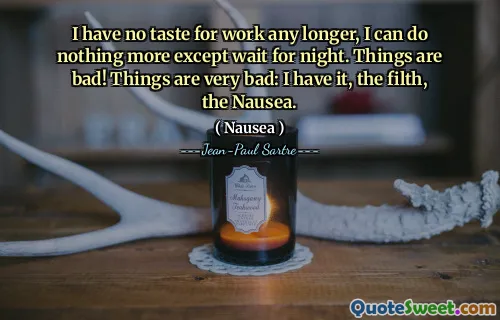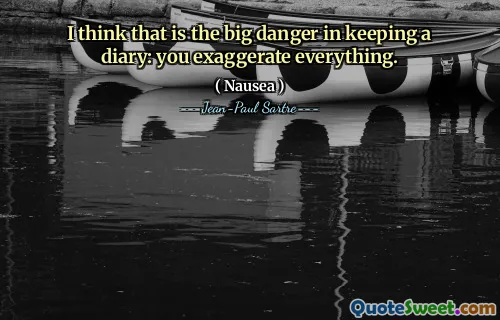The vegetation has crawled mile for mile towards the towns. It is waiting. When the town dies, the Vegetation will invade it, it will clamber over the stones, it will grip them, search them, burst them open with its long black pincers; it will bind the holes and hang its green paws everywhere.
In Jean-Paul Sartre's "Nausea," the imagery of vegetation creeping towards towns symbolizes nature's inevitable reclamation of human spaces after they become desolate. The description evokes a sense of foreboding, suggesting that when civilization declines, the natural world will surge forth to overtake and envelop remnants of human existence. This process is portrayed as both violent and transformative, highlighting the tension between man-made structures and the persistent force of nature.
This passage reflects a philosophical idea about existence and the absurdity of life. The creeping vegetation represents the inexorable march of time and the resilience of nature, contrasting starkly with human fragility. As the towns die, nature's power becomes evident, showcasing a world where plants and life forms not only survive but thrive in the absence of humanity, emphasizing the cyclical relationship between life and decay.








